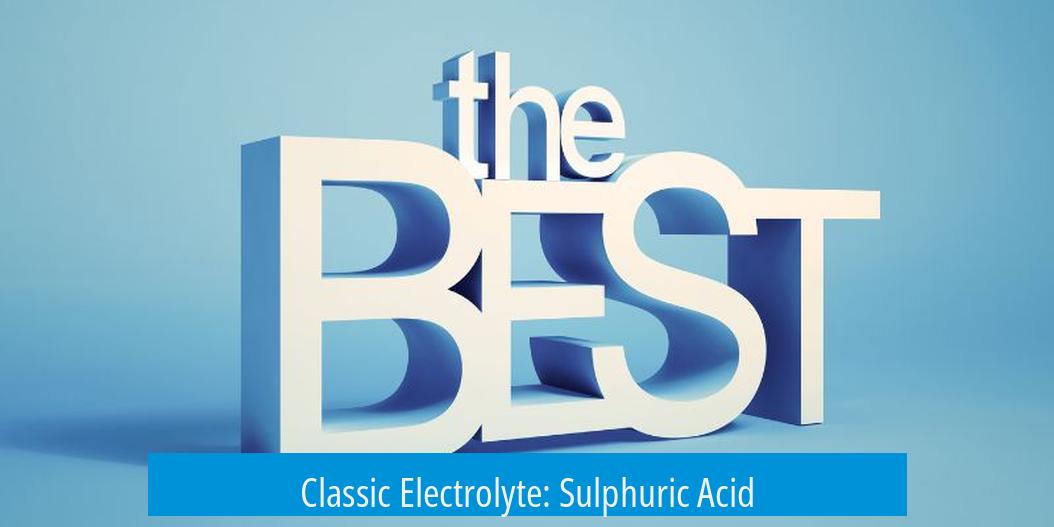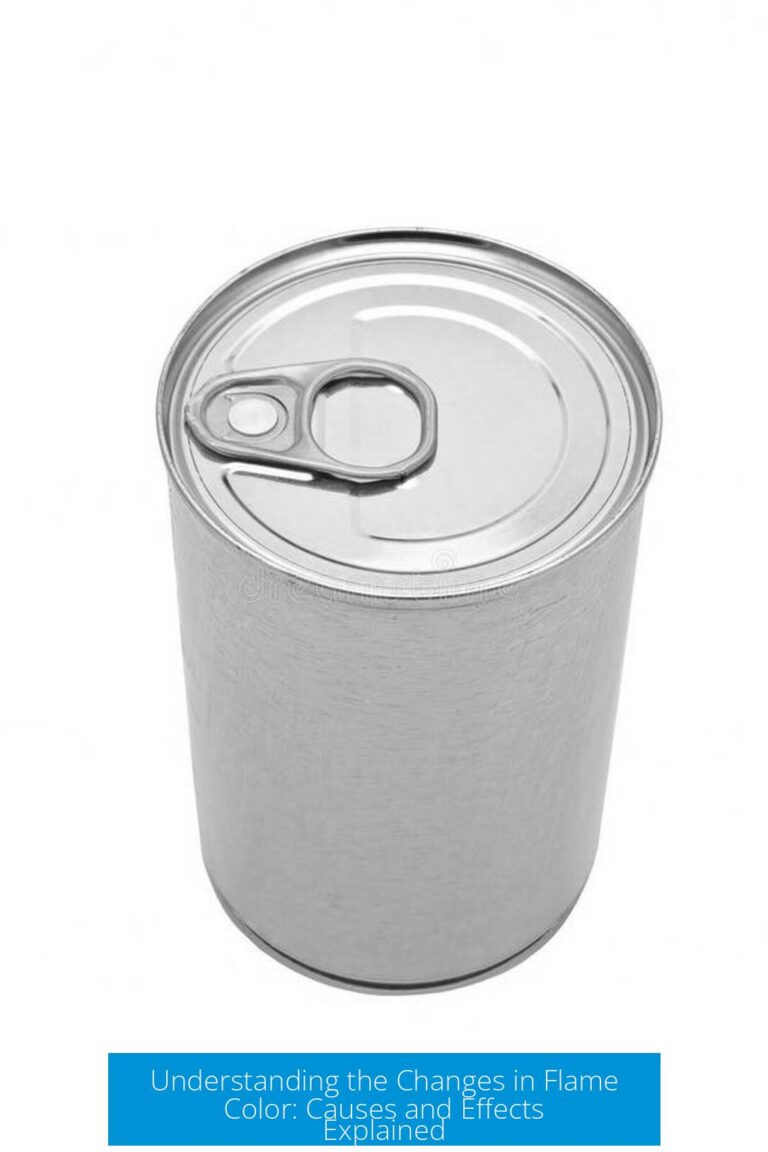Best and Safest Electrolyte for Electrolysis of Water

The best and safest electrolyte for water electrolysis is baking soda (sodium bicarbonate) due to its availability, safety, and effectiveness. It offers a good balance between conductivity and non-toxicity, making it ideal for both educational and practical electrolysis applications.
Classic Electrolyte: Sulphuric Acid

Sulphuric acid has been used traditionally as an electrolyte in water electrolysis. It provides excellent ionic conductivity and efficiency. However, it is highly corrosive and dangerous to handle without proper safety precautions. This limits its use to controlled laboratory settings.
Electrolysis Using Pure Water

Pure or tap water can be electrolyzed without added electrolytes but requires significantly higher voltage to initiate the reaction. This often means less efficient gas production and slower rates of electrolysis. Users may increase voltage, but this can cause safety issues and electrical inefficiencies.
Safe and Easily Accessible Electrolytes

- Baking soda (Sodium Bicarbonate): Widely regarded as the safest and easiest electrolyte to use. It dissolves well, improves conductivity, and does not release harmful gases during electrolysis.
- Epsom salt (Magnesium sulfate): A practical alternative that also supports self-regeneration of ions during electrolysis. It maintains electrolyte performance over longer periods.
- Washing soda (Sodium carbonate): Another safe and effective option. Like baking soda, it improves water conductivity without harmful by-products.
Electrolytes to Avoid
Chloride-containing compounds, such as table salt (sodium chloride), should be avoided. These electrolytes can produce chlorine gas, which is toxic and harmful. They also degrade electrodes quickly, reducing the system’s lifespan and safety.

Summary of Key Points
- Baking soda is the safest and most practical electrolyte for water electrolysis.
- Sulphuric acid offers high efficiency but poses significant safety risks.
- Tap water requires high voltage and is inefficient without electrolytes.
- Epsom salt and washing soda provide safe alternatives with good conductivity.
- Avoid chloride-based electrolytes due to toxic gas production and electrode damage.
Best and Safest Electrolyte for Electrolysis of Water? Let’s Dive In!

Wondering which electrolyte to use when electrolysis of water? The best and safest electrolyte isn’t just one mysterious chemical, but a smart choice among several options depending on safety, effectiveness, and availability. Electrolysis of water splits water molecules into hydrogen and oxygen gases using electricity — cool science, right? But what juice do you add to your water to make it work well without turning your experiment into a hazardous mess? Let’s unpack this.
At its core, an electrolyte increases water’s conductivity so electricity flows easily, letting electrolysis happen efficiently. But not all electrolytes are created equal. Some are downright dangerous, and others are household-friendly champs.
Classic Electrolyte: Sulfuric Acid – The Old Reliable, But Handle with Care
Ever heard of sulfuric acid? This strong acid has been the traditional electrolyte champion for electrolysis.
- Sulfuric acid is very effective. It dramatically boosts water’s conductivity.
- It leads to clean splitting of water into hydrogen and oxygen, without unwanted by-products.
However, sulfuric acid comes with obvious tradeoffs. It’s highly corrosive and can burn your skin or damage your equipment if not handled correctly. So, unless you’re wearing lab gloves, goggles, and a full suit, maybe consider safer alternatives.
Running Electrolysis on Water Alone – Is That Even Possible?
Believe it or not, pure tap water can undergo electrolysis on its own, but with a catch: You need a super high voltage power source.
- Without added electrolytes, electrical resistance is high, so you’ll need more voltage than most home setups can provide.
- Try using a 9-volt battery with salt — it’s generally safe at low voltages, but performance varies.
The takeaway here? You CAN use just water, but it’s slow and inefficient. Adding an electrolyte amps up conduction and speeds things up.
Safe, Readily Available Electrolytes: Your Kitchen and Bathroom Hold the Key
Now, for the sweet spot — safe, effective, and easy-to-find electrolytes that won’t make your experiment hazardous or stink up your lab (or kitchen).
- Baking Soda (Sodium Bicarbonate): Probably the safest household electrolyte you can get. It’s non-toxic, inexpensive, and makes water conductive enough for decent electrolysis. Bonus? You likely already have it in your pantry.
- Epsom Salt (Magnesium Sulfate): Another gem! It’s safe, widely available, and actually self-regenerates during operation, keeping your electrolyte fresh and effective. That means no constant replacement needed, a win for efficiency and economy.
- Washing Soda (Sodium Carbonate): Slightly more alkaline than baking soda, washing soda also works well. It’s found in some cleaning supplies and gives strong conductivity.
Besides safety, these options shine in stability — they won’t produce nasty gases or corrode your electrodes quickly. Plus, they’re a breeze to handle, making your electrolysis project both fun and safe.
Electrolytes to Absolutely Avoid: Chlorides
Here’s the no-go zone: Electrolytes containing chlorides, like table salt (common sodium chloride).
- Salt may seem cheap and handy as an electrolyte, but it’s a Trojan horse.
- Electrolysis in chloride solutions produces chlorine gas — a toxic and dangerous substance with a strong, unpleasant odor.
- Also, chloride ions ruin your electrodes by corroding them faster, meaning you’ll have to replace your hardware frequently. Not ideal.
- Unless your goal specifically involves generating chlorine for other experiments (and you know what you’re doing), avoid salt-based electrolytes.
What’s the Bottom Line?
Ask yourself: Do you want a clean, safe experiment without the risk of nasty fumes or hazardous spills? Probably. Then start with baking soda or epsom salt solutions. These strike the perfect balance of safety, cost, availability, and performance.
Need clear, practical advice? Mix about a teaspoon of baking soda or epsom salt into a cup of tap water. Use electrodes made from inert materials like platinum or stainless steel, apply a moderate voltage, and watch the bubbles form! It’s a visual, educational delight.
Why Does “Self-regeneration” Matter for Epsom Salt?
Epsom salt’s self-regeneration means it maintains its chemical balance during electrolysis. Say you’re running your experiment for hours: Your electrolyte won’t degrade quickly, saving you the fuss of constant refills. For hobbyists and students, this is a neat bonus that makes the project smoother.
Playing It Safe While Having Fun
Experimentation in electrolysis doesn’t need to be nerve-wracking. Pick safe electrolytes like baking soda or epsom salt, avoid chlorides unless intentional, and forget about dangerous acids unless you’re a trained chemist in a proper lab.
With these tips, water electrolysis becomes approachable, educational, and yes—bubbly fun! So grab your baking soda, and become a hydrogen gas creator in your own home. Who knew turning on a tiny bit of electricity could turn your kitchen into a mini science lab?
What is the safest electrolyte for water electrolysis at home?
Baking soda (sodium bicarbonate) is the safest and easiest electrolyte to use for splitting water safely. It is non-toxic and readily available.
Can I use tap water alone for electrolysis?
Yes, tap water can work without added electrolytes if you use a high enough voltage. However, adding a safe electrolyte improves efficiency.
Is it safe to use salt (table salt) as an electrolyte?
No, using salt produces chlorine gas, which is harmful and can damage electrodes. Avoid chlorides for water electrolysis unless you have a specific purpose.
Why is Epsom salt considered a good electrolyte?
Epsom salt (magnesium sulfate) regenerates itself in the cell, making it effective and safe for water electrolysis.
How does washing soda compare to other electrolytes?
Washing soda (sodium carbonate) is a safe alternative to baking soda and Epsom salt. It works well as an electrolyte but is less commonly used.





Leave a Comment